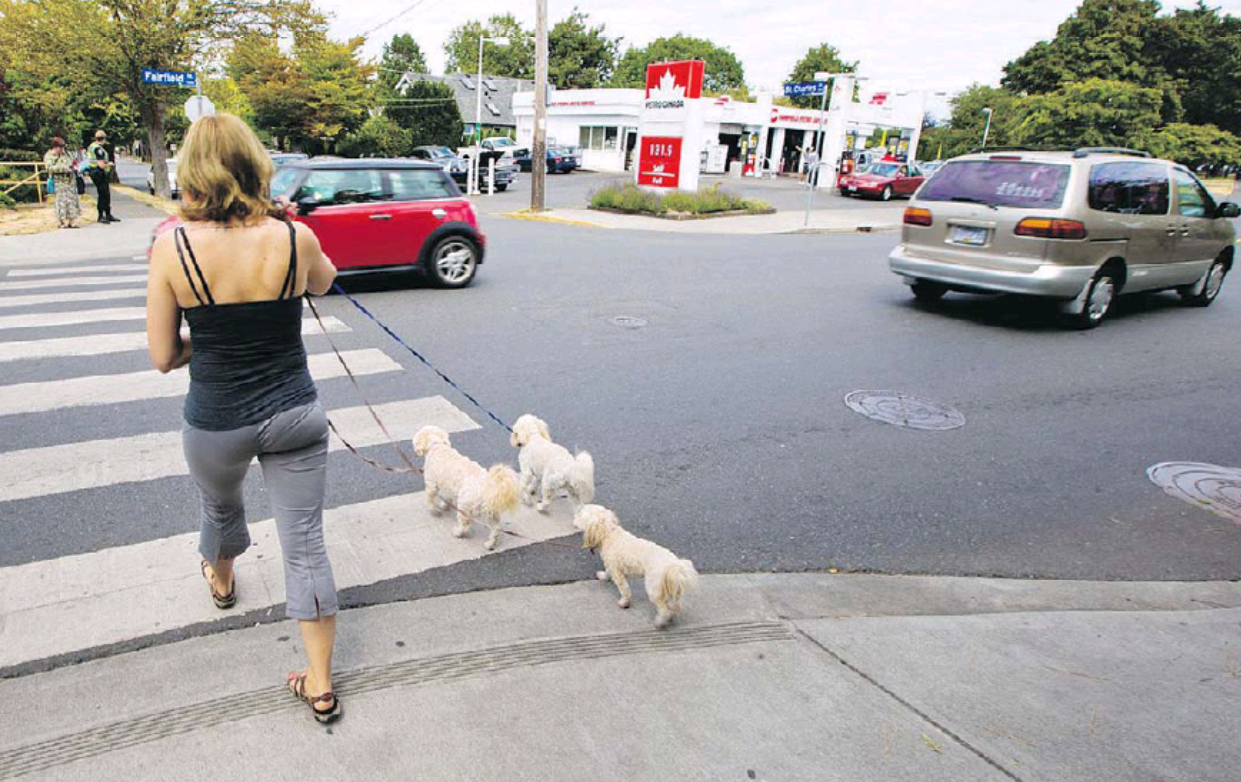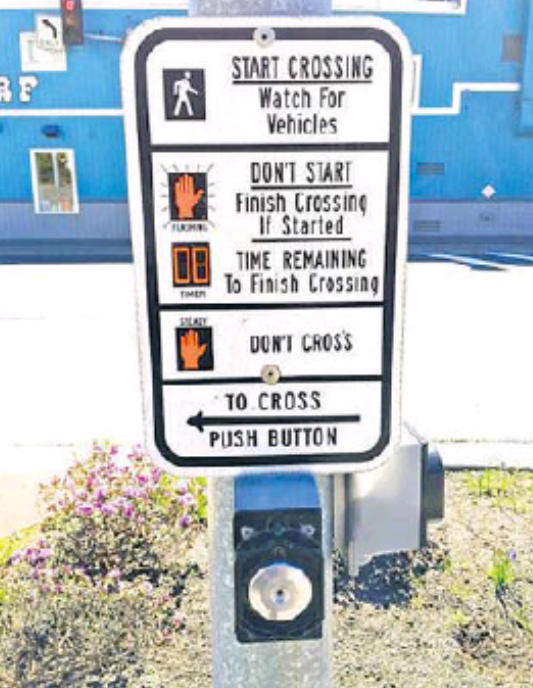Many drivers confused by crosswalks

Wide white vertical broad-lined crosswalks, commonly referred to as “zebra” crossings, are not governed by standard intersection or flashing lights.
Years ago, I observed a man of advanced age crossing a busy street in the middle of the block.
He had waited for the traffic lights to be solid red on the intersecting streets, each a block to his left and right.
After he had crossed the street, we met outside the bank building, which was a destination for both of us.
I could not resist asking him why he chose to cross where he did, as opposed to the safety of a crosswalk at the intersection where the bank was situated.
His answer was not only puzzling, but also very direct.
By crossing in the middle of the block, he said he had only two directions with which to be concerned, left and right.
He went on to explain the difficulty in keeping track of the four directions at a busy intersection.
The faulty logic of crossing a busy street without the aid of an intersection with painted markings, at the very least, is cause for concern.
There are ever-present dangers in the type, use and location of crosswalks.
Wide white vertical broad-lined crosswalks, commonly referred to as “zebra” crossings, are not governed by standard intersection or flashing lights.
When a pedestrian shows an intention to get across the street, whether at an intersection or mid-block, all vehicular traffic must yield by coming to a complete stop.
These zebra crossings are very seldom used by pedestrians.
Drivers are often able to travel uninterrupted through many of them, without ever having to stop for pedestrians.
They are often lulled into a false sense of security that the zebra crosswalks will always be unobstructed by pedestrians.
Zebra crosswalks are the most dangerous in our traffic system. Driver confusion abounds when municipalities place zebra lines at intersections with stop signs.
This gives drivers, who may be inattentive or unfamiliar with a part of the city, a false impression they can proceed without stopping.
All municipalities should ensure a provincially mandated consistent road marking for crosswalks.
This is sadly not the case in B.C.
Solid parallel horizontal crosswalk lines are placed at intersections governed by signalized traffic lights and stop signs.
When drivers approach crosswalks, they are warned well ahead of time of the rules that apply, by the very nature of the lined crosswalk configuration.
A solid stop line could be accompanied by zebra lines for additional emphasis.
Many crosswalks in residential areas are unmarked. The natural extension of a sidewalk at an intersection is a legal crosswalk.
Pedestrians need only show an intent to cross for drivers to be obligated to come to a full stop. Many crosswalks are unmarked, but still legal crossing areas for pedestrians.
Pedestrians are often confused at signalized intersection crosswalks. They should only walk when directed by the WALK sign.
When the pedestrian DON’T WALK sign flashes, they should not run, walk, jog or cross, regardless of the declining number counting the seconds remaining, until the light changes cycle.
Pedestrians should never run across the road. Drivers do not have much of a chance to avoid a crash when pedestrians run.
Gordon, a reader of this column, reminded me that Alaska has the best North American signals governing pedestrians at intersections.
It is a three-phase crossing instruction.
The first phase is a picture of a white stick man, indicating there is ample time to cross and to watch for vehicles.
The second is a red stop-hand, with the instruction to stop, but continue to cross if already begun and the seconds remaining to cross.
The third is a stop-hand, meaning do not begin to cross.
There is also an instruction to push the button to activate.

A three-phase crossing instruction sign used throughout Alaska.


